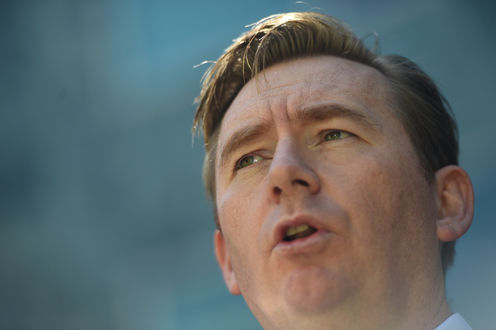
An Australian Medical Association report showing the nation’s public hospitals face a funding “black hole” because of federal government’s cuts gives premiers strong ammunition for their Friday’s meeting with Tony Abbott.
AMA chief Brian Owler, who on Thursday launches the AMA Public Hospital Report Card 2015, said that despite some small improvements “the public hospital system is not meeting the clinical demands being placed on it”.
In a swingeing attack on government cuts, Owler said that “the situation will only get worse as real Commonwealth funding reduces dramatically in coming years”.
Commonwealth funding for public hospitals for 2013-14 to 2016-17 was reduced by $1.8 billion in last year’s budget, the report card says, with a further $941 million reduction announced in the mid-year budget update.
The states face big squeezes in the longer term, as the Abbott government tries to push more responsibility onto them and first ministers are set to confront the Commonwealth at Friday’s Council of Australian Governments meeting. NSW Premier Mike Baird is particularly agitated about the issue.
Owler warned of a “perfect storm” for hospitals as “Commonwealth funding shrinks, performance benchmarks are not being met, and prices for hospital services under activity-based funding decline”.
He said the bleak outlook for public hospitals must be a priority for the COAG meeting, and the federal government should be looking at restoring funding in the coming budget.
The report card showed only “marginal improvement in public hospital performance against the performance benchmarks set by all governments, with no state or territory meeting the target of 80% of emergency department category 3 urgent patients being seen within clinically recommended triage times”.
The findings include that:
-
bed numbers per 1000 of the 65 and over population (at 17.5) and as a ratio per 1000 of the general population (at 2.57) have declined since 2011-12 (from 18.6 and 2.6);
-
most jurisdictions performed well below the target of 80% for emergency department patients seen within clinically recommended times;
-
nationally, only 70% of emergency department patients classified as urgent were seen within the recommended 30 minutes;
-
in 2013-14 only 73% of all emergency department visits were completed in four hours or less;
-
in 2013, no state or territory met the interim national emergency access target;
-
nationally, median waiting times for elective surgery have increased over the last 10 years;
-
2.4% of the patients admitted for elective surgery in 2013-14 waited for more than a year;
-
In 2013-14 79% of elective surgery category 2 patients (those who should be admitted within 90 days) were admitted on time – well below the benchmark of 100% set by COAG.
Owler said the states and territories were facing “a huge black hole” in hospital funding after a succession of federal cuts.
“The enormity of the ongoing cuts was starkly highlighted when the Treasury advised the Senate Economics Committee that Commonwealth funding for public hospitals from 2017-18 to 2024-25 would be reduced by $57 billion,” Owler said.
“Public hospital funding will be the biggest single challenge facing state and territory finances for the foreseeable future,” he said. “The hospital funding blame game is back, and bigger than ever. Public hospitals and their staff will be placed under enormous stress and pressure, and patients will be forced to wait longer for their treatment and care.”
Owler said that instead of putting the public hospital sector on a sustainable footing, the federal government had retreated from its responsibilities. “Funding is clearly inadequate to achieve the capacity needed to meet the demands being placed on public hospitals.”
States and territories would be left with much greater responsibility for funding public hospital services.
“Performance against benchmarks will worsen and patients will suffer. Waiting lists will blow out.”
The AMA dismisses the government argument about the escalating costs of the health system. “Australia’s expenditure on health has been stable as a share of GDP, growing only one per cent over the last 10 years.” In 2012-13 Australia had the lowest growth – 1.5% – in total health spending since the government started reporting it in the mid-1980s.
Michelle Grattan does not work for, consult to, own shares in or receive funding from any company or organisation that would benefit from this article, and has no relevant affiliations.
